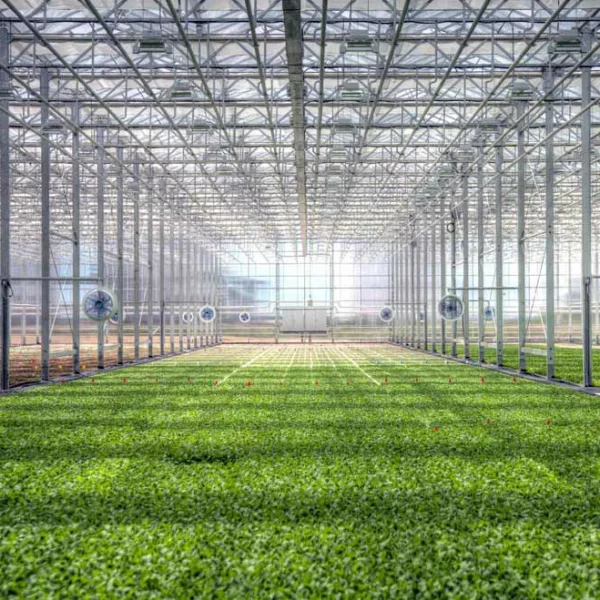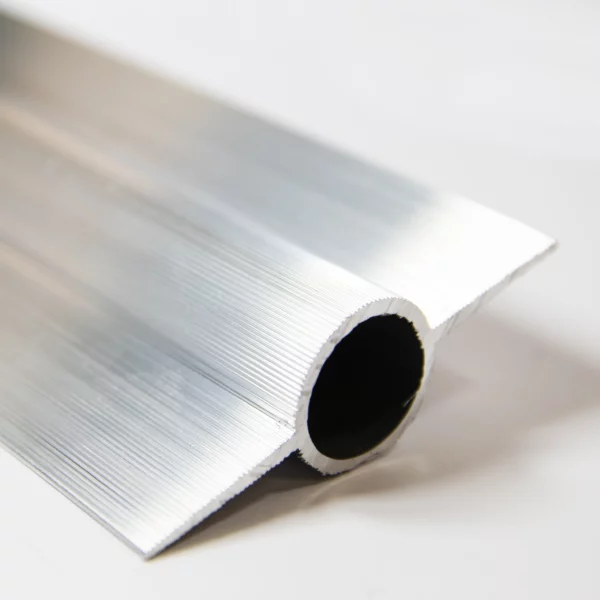Not Your Grandfather’s Boiler Room

“This is the first basic decision—and again pros and cons each way. Not generally realized: the fact that central boilers, in general, are about 10% more fuel-efficient than unit heaters. We hear often 75% for a boiler, 65% for unit heaters. Plus the fact that central boilers typically are quickly convertible from oil to gas to propane. These are two very big advantages!”
This is what Vic Ball, the late, great editor-in-chief of GrowerTalks, wrote in the 14th edition of the Ball RedBook in 1985. At that time, the heating system of choice was overhead gas unit heaters; there weren’t many who were installing boilers.
Vic ticked off the benefits of having a unit heater: they take less investment; there was usually more than one, so if one fails, the other can pick up the slack; you don’t need space for a boiler room. But it was that 10% efficiency that stuck with him.
“… a 10% penalty in fuel cost over 10 years is a lot of money,” he wrote. And because unit heaters are overhead, “systems that introduce the heat up in the attic of the house are very wasteful compared to heat distributed down at the soil surface.”
Vic admitted that with regard to cost, unit heaters were much more economical upfront, but boilers were tempting with their higher efficiency, low operational costs, and use of low-cost fuels. “Promising!” he mused.
Since then, we’ve penned many a piece in these pages about heaters and energy efficiency (including one about burning corncobs and soybean pods!) and I think most of them came down to the same conclusion: there’s no right or wrong answer when it comes to heating your greenhouse. As with a lot of decisions on inputs, you have many factors to weigh, including your location, the type of greenhouse you have, what you’re growing and your resources.
In 1985, the industry was still reeling from the energy crisis of the late 1970s, where a barrel of oil went from $3 to $12. Although the original embargo was lifted after a few months, oil prices remained high and the effects of the energy crisis lingered for almost a decade.
Now, with the cost of natural gas holding relatively steady, and new climate-conscience regulations forcing new innovations, growers have more options for heating their greenhouses.
Grandpa wouldn’t recognize this boiler

Jim Rearden, president of BioTherm, is our resident heating expert and no stranger to the Ball RedBook himself. Because of his knowledge, we’ve tapped Jim to write the chapters on greenhouse heating for the last two editions of Volume 1.
Although most greenhouse operations primarily use unit heaters because they’re relatively inexpensive, Jim said he’s seeing more growers go a bit further with regard to their heating systems. To help supplement their unit heaters, some growers are installing bottom-heat systems under the benches in order to better control the flow and keep the heat from staying toward the roof.
“But the real enlightened ones are putting in a centralized hot water system with boilers and those systems are substantially more efficient and greener,” said Jim. “And once people get on hot water, they stick to it.”
Using boilers isn’t exactly new—they’ve been used in greenhouses for at least 100 years—but there are a few differences in the more current models that make them more efficient and environmentally friendly.
When the average person thinks of a boiler room, they picture a giant, noisy, dirty metal piece of equipment and that’s what many growers had 25 or 30 years ago, said Jim—a big vessel that looks like an engine to a coal-fired locomotive.
“It was just all steel or cast-iron devices, big steamers,” he explained. “It kind of goes back to the Industrial Revolution when people needed to have big things that made big amounts of steam and they built them out of the most available materials.”
Now, today’s boiler rooms resemble computer server farms, with rows of boilers that look like file cabinets where you don’t lose your hearing if you’re standing next to one. And instead of cast iron, they’re made of noble metals like copper and stainless steel, which, it turns out, transfer heat a lot better.
“The manufacturers of those kinds of boilers have only recently seen the kinds of equipment that could really step up to the bigger facilities,” said Jim. “That technology within the last 10, 15 years has really grown, so now we’re seeing where it’s kind of blurred the lines on what a ‘real boiler’ is.”
These new types of boilers, called “low-mass boilers” (Jim actually wrote a piece about them in the November 2020 issue of GrowerTalks) can handle the natural fluctuations of a greenhouse environment better than a regular old high-mass boiler might. And they can respond to these fluctuations more quickly.
“Like your car with cruise control, they have the ability to really modulate the amount of fuel to match the load,” said Jim. “It’s looking at how many BTUs it needs to make right at that moment and it slows down to meet that; it doesn’t start and stop in short cycles, which tends to hurt efficiency.”
And when it comes to being more efficient, the numbers speak for themselves. Jim said BioTherm still has some clients that have large steam plants from the 1960s and ’70s that run in the mid-40s of efficiency percentage. But “little by little, we’re getting them to understand that if they put in this newer, low-mass boiler equipment with really good burners they could get that number up into the 90s or more,” said Jim.
Like with many of the modern climate controls, some boiler systems come with apps that give you the ability to see what’s going on inside and alert you if something isn’t working right. And improvements continue to be made with regard to levels of efficiency.
“The biggest low-mass boiler I used to be able to sell would heat maybe half of an acre at 2 million BTUs,” said Jim. “It made it hard for us to compete with the high-mass guys because they’d need 15 boilers for 5 acres. But now, we have equipment that will go and heat up to
1.5 acres with one of these efficient low-mass boilers.
“They’re really changing the old-world thinking of what people’s paradigm is of a typical boiler. If you walk into one of our boiler rooms, it’s like a bunch of file cabinets, and they’re very quiet and efficient versus walking into one of the old boiler rooms where you needed a hard hat and some coveralls. This is not your grandfather’s boiler room.”
Boiler trends

The market has changed, as markets do. And there are a number of reasons why that’s allowed for innovation and new developments with regard to greenhouse heating.
There’s no doubt that new environmental regulations have played a significant role, pressing manufacturers to develop products that run cleaner—and even run on other forms of energy.
“Well, in California, we always lead the charge, and electrification has become a huge thing,” said Jim. “Five years from now, we’ll probably be writing an article about that. And there are municipalities where if you build (like in San Francisco now), you can’t have anything that burns gas or propane—everything has to be electric. And there are a lot more places like that.”
Jim said that even in some rural areas, like the San Joaquin Valley in California, boilers and other type of combustion equipment have to be “low NOX” now, meaning low emissions. There are even some companies that are looking at solar-powered boilers. For now, Jim says he thinks that’s farther down the road, but still something to keep in mind.
In the meantime, what BioTherm and other heating suppliers are noticing when installing new systems is that growers tend to plan ahead a bit more. With unit heaters, you buy as you build. But with a boiler system, you can install it with the intention that it’ll be servicing more bays in the future.
“We see a lot of clients coming back where we set up a system where they might have three to four phases of growth in mind,” said Jim. “We’ll set up a system that gives them the ability to expand without having to buy a boiler for everything that they’re planning in the next 10 years.”
A few years ago, “biomass” was trending, as some growers were installing wood-fired boilers and storage for wood chips. This type of heating system works well for many operations, but with certain caveats in mind.
“There are people who can put enough on them to make them run clean, but by and large, we don’t see a lot of that going on,” Jim said. “It’s a struggle to make them burn clean and there’s a tremendous amount of maintenance that eclipses some of the potential savings. Generally, it’s a much bigger expense and you have to assign employees to operate them.” Boiler buzzwords and necessities
If you’re in the market for a new boiler or looking to upgrade, there are a few things to keep in mind. First, look at your space. With a boiler system, you have the luxury of having a large area of greenhouse space controlled from one area.
“You should think about setting up your space with piping that can accept more equipment so you don’t have to re-do the infrastructure,” said Jim. “A lot of times, people come to us and say, ‘We’re going to build an acre now, but we want to build 10 acres over the next 10 years.’ So we’ll set up their mechanical system in that room so that the pipe is large enough to add equipment as they go.”
Second, figure out what type of fuel you have access to, whether it’s to natural gas or propane, and how much it’ll cost you. Jim said that most growers can still buy natural gas at around 55 to 60 cents a therm, which is 100,000 BTUs gross. If you have to factor in transportation, most greenhouse operations are seeing about 70 cents or less per therm. Generally, propane is double that.
Back in 1985 when Vic was writing about boilers, most of them were using oil or coal, but since oil has remained one of the most expensive types of fuel, not many growers use it anymore. During the last 30 years, natural gas companies have significantly expanded, installing gas lines all over the country, so cheaper fuel is more readily available.
Third, bone up on all of the regulations in your area—especially if you live in California, which has the strictest combustion laws. And Jim suggests that you keep paying attention because new legislation pops up all of the time, so you’ll need to know what’s coming down the pipeline (pun intended).
Lastly, know the lingo. Jim said the new buzzword in the boiler world is “condensing efficiency.” This is when the gas going through the flue is very cold because the cold water on the return side of the system is extracting the most amount of energy possible during the combustion process. Having good condensing efficiency could save you as much as 10% to 15% off of your energy bill, so this is something you should look for when shopping for a new boiler system.
“There are a lot of boilers that are sub-condensing where they just burn the fuel,” said Jim. “When you burn fuel, it’s a fairly aggressive product. The thing that comes out of the process of combustion is the pH is about 4, and if you let it linger inside the unit until it cools off, it’ll rust and corrode it. Newer boilers made of the more noble metals like copper or stainless steel can withstand the low pH. And condensing-efficiency boilers can be rated as high as 99%, which is the theoretical highest you can get.
“It shouldn’t be your first cost, it should be the cost to ownership over 10 to 15 years, and most boilers should work up to 15 to 20 years, generally.”
Is your boiler running …?
If you’re already an adopter of a boiler heating system, there are two ways to make sure that it’s running as efficiently as possible. Jim said that many growers get into the trap of looking at how much fuel is actually being burned, going into the water and up the chimney. He says “trap” because this doesn’t account for “standby losses,” especially if you have a high-mass system. The types that are turned on in the fall and pretty much stay on until the spring don’t have the ability to adjust output based on variables. The real way to look at how your boiler is working is by figuring out what your “seasonal efficiency” is.
“If you just look at your steady combustion efficiency, you might believe that your boiler is getting to 80% or 82%, which is generally what the older systems would achieve,” Jim explained. “But if you look at your annual loads and your annual fuel usage, you might find that you’re having a lot of parasitic loads from standby losses, chimney and piping losses, etc. that end up suppressing what your true efficiency is.”
Jim said the bottom line is if you’re buying a certain amount of fuel, whether it’s natural gas or propane, you want to make sure that you’re getting your money’s worth for every unit and avoiding as much waste as possible.
“So instead of boilers that have chimney temperatures that are in the high hundreds of degrees, we have boilers now that basically make a vapor of steam that goes out through a plastic vent instead of having to have a big steel chimney that can handle hundreds of degrees,” he said. “Growers will save a lot of money if they really pay attention to what their seasonal efficiency is.”



